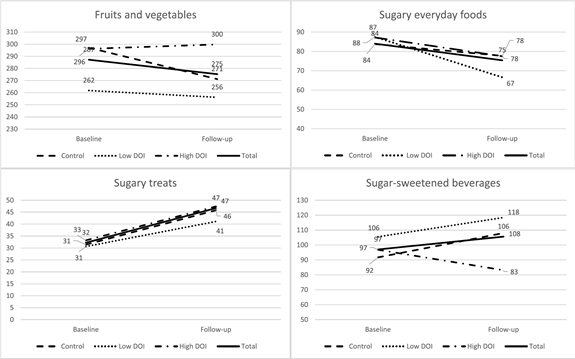Medicine that you don’t take has no effect, training that you don’t do yield no results, and without practice one cannot learn. Similarly, the degree of which participants in studies and interventions adhere to the protocol matters for the outcome. Studying how and whether participants really implement interventions is key in understanding how better and more effective health promoting interventions can be conducted.
Both children and adults in Western countries generally eat too little fruit and vegetables, and in addition, some consume too much sugary foods and drinks. As diet has a great impact on both long- and short-term health, changing this behavior for the better is seen as an imperative for public health. Health promotion interventions among young children have shown mixed effects, and one reason for that could be that researchers do not often examine how the intervention was actually implemented.
These findings underline the importance of also examining the level of implementation of the intervention as new observable effects may emerge
The implementation of health and lifestyle interventions do not always go as the planners would like and it might be difficult to know how well study participants really implement the intervention activities, especially in studies relying of self-reporting. When designing interventions, researchers might often assume that those who carry out the intervention, who may also be the targets of the intervention, will readily carry out the tasks they are asked to do. In reality, however, it is likely that some, or quite a few of those implementing interventions will only partially carry out the intervention programme. Some might not implement as intended by the planners, and some may forego it totally.
Researchers at the FHRC set out to explore what factors influence about how and for whom these kinds of interventions are effective, as this kind of knowledge would allow us to plan and execute more effective protocols in the future. The researchers relied on data from the DAGIS intervention, a study on promoting healthy lifestyles among preschool children, both at preschool and at home. As children's lifestyles are highly dependent on the adults around them, the primary aim was to target parents and early childhood education staff in order to promote healthy lifestyles by helping the parents and staff in influencing the physical environment, such as access to food and the presence of screen equipment, and the social environment, such as adults' attitudes and behaviors towards children.
– In addition to implementation, we were also interested in which factors at home that mediate the possible intervention effects. Previous studies have shown that parental role modelling for eating, i.e. which foods the parents themselves eat in the presence of the child, and availability of different foods play an important role, says Reetta Lehto, researcher at the Folkhälsan Research Center and main author of the paper on the mediators and implementation of the DAGIS intervention and its effects on children’s food consumption.

Reetta Lehto is the main author of the research article “Effects of the DAGIS randomized controlled trial on home environment and children’s food consumption according to the degree of implementation”.
The study at hand examined whether the degree to which parents implemented the DAGIS-intervention impacted children’s consumption of fruits and vegetables, sugary everyday foods, sugary treats or sugar sweetened beverages via home mediators: food availability, parental role modelling and norms.
A total of 476 children aged 3-6 years participated in the five-month kindergarten intervention. Parents reported children's food intake and the extent to which they had implemented the intervention programme at home. The analyses examined the effect of low and high implementation rates on children's food consumption. Compared to the control group, children's consumption of sugary drinks decreased in families with high implementation rates. In addition, parental norms for vegetable and fruit consumption changed in high-implementation families, which in turn increased children's vegetable and fruit consumption.

Consumption grams per day of fruits and vegetables, sugary everyday foods, sugary treats and sugar-sweetened beverages at baseline and at follow up (Fig. 3 in Lehto et al. 2022).
– Often researchers only examine the difference between the intervention and control group. These findings underline the importance of also examining the level of implementation of the intervention as new observable effects may emerge, says Lehto.
So, what are the takeaways? Well, the study found that the consumption of sugar sweetened beverages decreased among the children whose parents had implemented the intervention extensively. In contrast, there were hardly any effects on children from families with low levels of intervention.
These results show the significance that parents have in forming the norms, habits and behaviors of their children. However, this also begs the question; how do we design interventions that people will adhere to and implement to a sufficient extent? Easy implementation and perhaps some reward as an incentive for participating may prove useful, but changing behavior and habits is seldom easy, especially if the subject has little motivation or resources to do so to begin with.
– As behavior change is difficult, we cannot only rely on individuals to change their lifestyles, even though interventions show some positive effects. Societal and policy changes to promote healthy habits are needed as well, Lehto concludes.
Simon Granroth, Science Communicator
Reference:
Lehto, R., Vepsäläinen, H., Lehtimäki, AV. et al. Effects of the DAGIS randomized controlled trial on home environment and children’s food consumption according to the degree of implementation. BMC Public Health 22, 2268 (2022). https://doi.org/10.1186/s12889-022-14639-y
